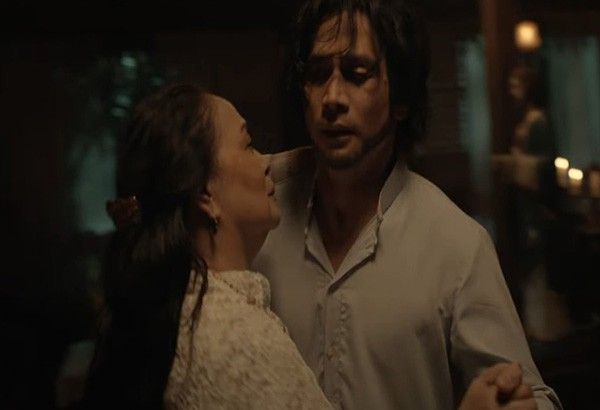REVIEW: ‘MALLARI’
Here’s a true story: If London had a Jack the Ripper in the 1800s, Pampanga had a Juan Severino Mallari — a Catholic parish priest in Macabebe during the Spanish colonial period who is the first documented Filipino serial killer.
Mallari is said to have killed a total of 57 people. This is the foundation of the horror movie Mallari, the highly anticipated Metro Manila Film Festival entry with a sterling cast and a fancy Warner Bros. distribution. Piolo Pascual plays the sick kura paroko.
Director Derick Cabrido, who once again teamed up with his Wish You Were The One (2023) screenwriter Enrico Santos, opted not to give their audience a simple slasher horror film expected in a serial killer tale. Instead, they decided to go for a part-fiction and part-factual epic saga that spans three generations of Mallaris (all played by Pascual) with a whopping runtime of two hours and 10 minutes and crammed with multiple horror subgenres: supernatural, monster, sci-fi, fantasy, curses, witchcraft and more.

Victim or villain?
It appears that the film’s inspiration mostly came from the Esquire feature titled “Victim or Villain? The Untold Story of the Priest Who Became the First Filipino Serial Killer,” which contains a mix of theories, rumors, and investigations that the filmmakers fleshed out for roller-coaster entertainment rather than as an illuminating psychological case study of a man of the cloth who goes on a killing spree.
In Mallari, the central character is not the killer priest — but his descendant, Jonathan Mallari, a burdened physician in the present day who visits his Macabebe ancestral home (the place of the 1800 killings) with a vague agenda.
Jonathan’s arrival triggers a series of mysterious murders in the area. As if this is not stressful enough, he also becomes a victim of random creepy sightings in his ancestral home (i.e. jump scares) and is annoyed by his assistant, a cussing and nosy church deacon, Lucas (a brilliant JC Santos).
A third Piolo role, another Mallari descendant, Johnrey, soon enters the picture. A time-traveler-slash-film documentarist in the 1940s, he exists in the script to conveniently spoon-feed his great-great-great nephew Jonathan with information about the events in the1800s via several vintage reels, which Jonathan has to find and collect like he’s in a time-sensitive game challenge.
So, all Jonathan has to do is to brood, mildly sift through the old house, snap at Lucas and fall on his butt whenever he is startled by a random ghost or poltergeist — which he quickly recovers from as if these were common occurrences.

Worth a watch
The use of time travel is weirdly associated with astral body projection, which is popularly known as an out-of-body experience where a person intentionally leaves his physical body, be able to observe his own unconscious body and travel in the realm of the present day. But time travel is different from astral projection.
The movie’s nonlinear storytelling is mildly confusing, combined with tiresome repeated sequences that precede the revelations of the film’s many plot twists. It is also packed with side stories designed solely for jump scares.
But what makes Mallari still worth a watch is, yeah, the jump scares. Cabrido’s skillful camera knows how to evoke tension and suspense, scenes where you’d nervously brace yourself for the impact of the jump scare. And once it happens, you will literally jump out of your seat.
Cabrido also has a talent for staging murder scenes and hand-to-hand combat. The fight choreography is flawless and exciting, with every blow powerful and convincing.
With impressive lensing, color palette, atmospheric vibe, and the outstanding performance of Santos and Gloria Diaz as the priest’s mother, the film triumphs on a technical level. But it is bogged down by too many excesses, twists, and unnecessary embellishments.
Lacking a singular focus, Mallari is a too-elaborate smorgasbord of horror, compounded by Pascual’s multiple roles. But if you’re simply into suspense and jump scares, then you’d enjoy this carnival fun house.
2.5 out of 5 stars
Opens 25 December in cinemas as part of the 2023 Metro Manila Film Festival
